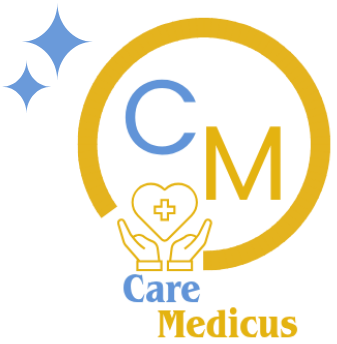Technology is redefining the healthcare landscape. From improving patient care to optimizing hospital resources, modern data analytics and artificial intelligence (AI) are driving smarter, more efficient operations. Predictive analytics in healthcare is one of the most powerful innovations reshaping the industry. By using AI and machine learning (ML) to analyze medical data and historical claims, healthcare providers can identify potential risks, prevent claim denials, and improve diagnostic accuracy before problems occur. This article explores how predictive analytics is transforming healthcare operations—its key applications, measurable benefits, and the emerging technologies shaping its future.
What Is Predictive Analytics in Healthcare?
Predictive analytics combines AI, ML, and statistical modeling to identify data patterns and forecast future outcomes. In healthcare, it enables professionals to make proactive decisions that improve both clinical and operational performance.
By studying patient records, lab results, and genetic data, predictive models can assess the likelihood of developing chronic illnesses such as diabetes or heart disease. These insights support early detection, preventive treatment, and better allocation of resources across healthcare facilities.
As hospitals embrace data-driven strategies, predictive analytics is evolving from a diagnostic tool to a core driver of value-based care, helping providers deliver better outcomes at lower costs.

Top Applications of Predictive Analytics in Healthcare
Predictive analytics is reshaping how hospitals and clinics operate. Below are some practical, real-world applications driving impact today:
- Predictive Equipment Maintenance: AI-powered systems can forecast when vital medical equipment—like MRI or CT scanners—will need maintenance. Anticipating issues before they occur reduces downtime, improves patient scheduling, and keeps critical devices available.
- Resource Planning and Allocation: Hospitals use predictive models to estimate patient admissions during seasonal spikes or public health emergencies. These forecasts help allocate staff, beds, and medical supplies efficiently, reducing overcrowding and improving patient flow.
- Surgical Risk Management: Predictive analytics allows surgical teams to assess patient risk factors and anticipate potential complications before procedures. This supports safer surgeries and more personalized perioperative care.
- Preventing Hospital Readmissions: AI models analyze post-discharge data to identify patients at risk of readmission. Healthcare teams can then intervene with follow-up care, virtual check-ins, or medication adjustments to prevent unnecessary returns.
- Smart Claims and Revenue Cycle Optimization: Predictive analytics can detect potential claim denials before submission. By automating claim tracking and prioritizing at-risk cases, hospitals improve reimbursement rates and reduce administrative rework.

Key Benefits of Predictive Analytics in Healthcare
Implementing predictive analytics delivers measurable improvements across multiple dimensions of healthcare operations:
- Early Disease Detection: Identifying high-risk patients before symptoms develop allows for earlier intervention and better treatment outcomes.
- Personalized Care: Data-driven insights make it possible to design treatment plans tailored to individual needs, improving patient satisfaction and recovery.
- Operational Efficiency: Accurate forecasting enables better staffing, inventory control, and bed management—reducing waste and increasing cost efficiency.
- Fraud Prevention: Predictive models flag unusual patterns in billing or prescriptions, helping organizations detect and prevent healthcare fraud.
- Reduced Claim Denials: Automated, AI-driven denial prediction minimizes errors and streamlines revenue cycle management.
- Improved Data Accuracy: Continuous monitoring ensures cleaner data entry, eliminating costly billing errors and compliance issues.

Emerging Trends Shaping the Future of Healthcare Predictive Analytics
As technology evolves, predictive analytics continues to integrate with next-generation tools and systems. Here’s what’s coming next:
- Smarter AI Models: Advanced deep learning algorithms will enhance diagnostic precision and accelerate clinical decision-making.
- Automated Claim Tracking: AI agents will monitor claim status in real time, send alerts, and communicate with payer systems for seamless updates.
- Real-Time Data Validation: Systems will automatically review claim data as it’s entered, reducing manual oversight and improving accuracy.
- IoT and Wearable Integration: Smart devices and wearables will collect continuous health data, allowing real-time monitoring and early intervention.
- Blockchain Security: Blockchain will safeguard patient information and ensure transparent, tamper-proof data sharing between providers.
- Enhanced Telehealth: Predictive models will personalize virtual consultations by analyzing patient data and suggesting targeted remote care solutions.

The Bottom Line
Predictive analytics is no longer a futuristic concept—it’s a vital component of modern healthcare. By leveraging AI, machine learning, and big data, healthcare organizations can detect diseases earlier, tailor patient care, and run more efficient operations.
As predictive analytics continues to evolve, hospitals that embrace data-driven decision-making will gain a competitive edge—achieving better patient outcomes, lower operational costs, and stronger financial performance.
To stay ahead, healthcare leaders should partner with trusted technology providers like Care Medicus who specialize in AI-driven predictive analytics solutions. Investing in these innovations today will build a smarter, more proactive healthcare system for tomorrow.






Leave a Reply